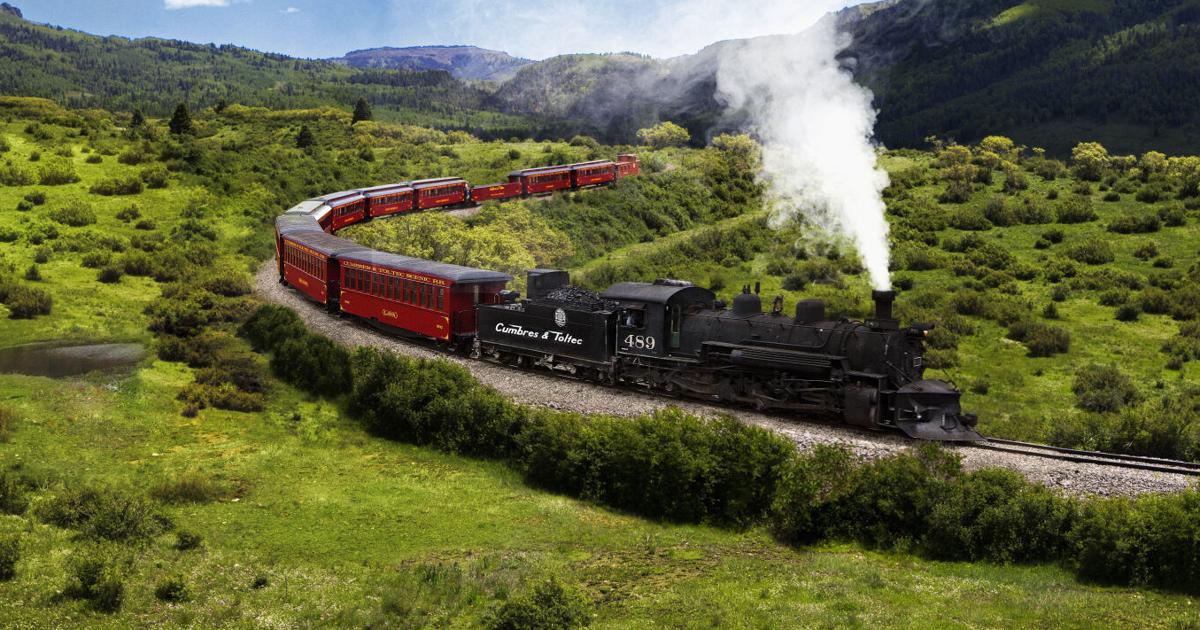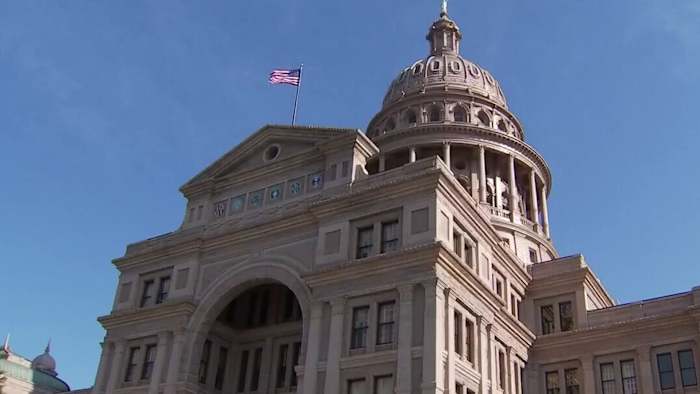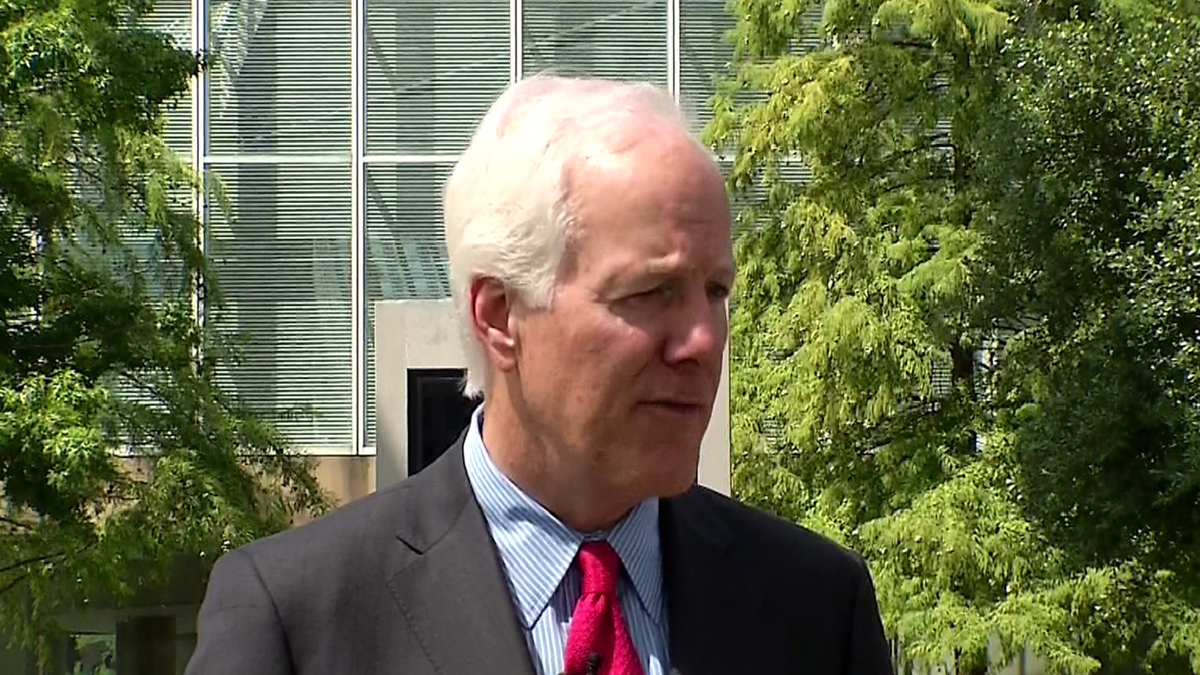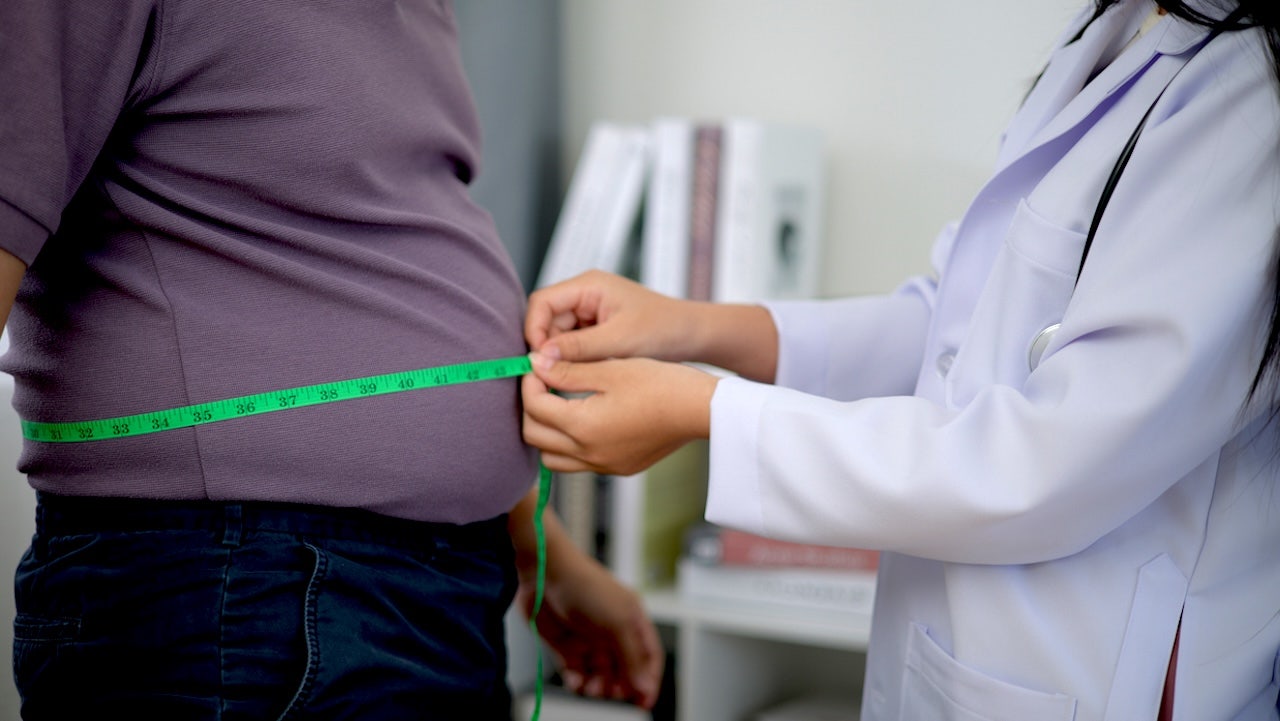Austin, TX
What to expect from the San Antonio-Austin mega-metro

The mega-metro will lean heavily on I-35.
RoschetzkyIstockPhoto/Getty Images/iStockphoto
In 1971, the area of North Texas that encompasses Dallas, Fort Worth, Arlington, and the like, didn’t have a unified identity, at least not an official one. The grouping of cities up at the top of Texas were organized under the banner of the North Texas Commission as the DFW Airport was being built, and the syndicate wanted a way to put forth that this new conglomerate of cities was ready to play with the big boys.
Advertisement
Article continues below this ad
Sure, Fort Worth residents get their purple khakis in a bunch at the idea that they’re anything like people from Dallas, but if you live anywhere else in Texas, the DFW Metroplex is a monolith. It’s the Dallas Cowboys. It’s the State Fair of Texas. It’s the Red River and almost Oklahoma and everything way up there. And the economies of each city have benefited from their associations with each other.
As it appears now, San Antonio and Austin, two cities that could not be more different from each other, are preparing for their own inevitable metroplex. Once a tossed-off eventual inevitability, leaders in each city and the towns in-between — mayors, economic development folks, chambers of commerce — are having high-level conversations about the new region. In fact, they’ve been preparing for this since at least 1984, when the Greater Austin-San Antonio Corridor Council formed, composed of city leaders and business-owners in both cities.
Even the jewel of San Antonio, the Spurs, played a couple “home” Austin games in 2023 — to the chagrin of everyone in San Antonio — and Gregg Popovich spilled the beans that the series will continue. Not to get all Brian Windhorst here, but why is that?
It’s because the San Antonio-Austin metroplex is coming soon, whether we like it or not.
Advertisement
Article continues below this ad
Developing the San Antonio-Austin mega-metro
It’s such a real idea that those who make these decisions are not even calling it a metroplex this time. Just as it was in 1971, for branding purposes, this region is already being touted as the San Antonio-Austin mega-metro, hyphenated and (for now) lowercase.
In early July, San Antonio’s PBS station KLRN debuted a documentary on a subject that has been on our minds for a while at MySA. Titled San Antonio – Austin: The Emerging Mega-Metro — the synergy! — it is hosted by Henry Cisneros. The former San Antonio mayor interviews Austin Mayor Kirk Watson, San Antonio Mayor Ron Nirenberg, President of the aforementioned corridor committee Ross Millow, and a slew of other leaders in the combining large cities space.
From the outset of the documentary, it’s apparent that the mega-metro is, well, kind of already here. Everyone’s just figuring out how to make it work before we run out of water or expire while waiting to merge on the I-35 superhighway. There are some brain-melting figures, too, each of which represents the lowest numbers they’ll probably ever be, like the 495 people that move to the 13-country region that encompasses the mega-metro or the upward of 150,000 vehicles that traverse the main highway between the two cities every day.
Advertisement
Article continues below this ad
One of the producers of the KLRN documentary, Shari St. Clair, told me that she was amazed with how quickly the mega-metro is developing.
“We’re looking at millions of more people moving in here in the next 20 years,” she said. “It’s just astounding what’s happening. And we thought, this is just a story we’ve got to talk about. Lives will change because of this.”
My life changed because of the metroplex — err, mega-metro — too.
Examining the San Antonio-Austin mega-metro
Advertisement
Article continues below this ad
Not to get too existential, but this very idea of connecting the two metropolises is why they pay me to wake up every day and write stories about Austin for a website that literally has San Antonio in the name. The notion that San Antonio and Austin are already, kinda, sorta, a mega-metro means that my bosses guessed correctly. And it means that I have some more work to do in bridging the gap between readers in each community. It has to be all one, like Dr. Bronner’s Magic Soaps.
For that reason, I have spent the last few weeks — and will continue to — reporting on just what the heck is going on when we talk about the Austin-San Antonio (or is it San Antonio-Austin) mega-metro.
Over the next few months, we’ll examine the Austin-San Antonio mega-metro from many angles. Through reporting with experts and city officials, we’ll break down what the Austin-San Antonio mega-metro means for transportation, jobs, culture, and more. How do we protect the Edwards Aquifer? Will there be high rises in downtown Kyle? Can Buc-ee’s stock enough beef jerky to handle the population explosion?
At the outset of our reporting, this was to be one article, but the smashing together of two of the 10 largest cities in America is a tall order. We’ll delineate what the mega-metro could look like from every conceivable angle for a more digestible look at the weighty topic.
Advertisement
Article continues below this ad
Leading off is transportation. How could a mega-metro transform how we move around in the region? Is the infrastructure there yet? We’ll examine the I-35 of it all — and more — our next installment.

Austin, TX
Austin traffic increased after state workers returned to office, but travel speeds barely changed

Traffic volumes on Austin’s highways climbed after state employees were ordered back to the office full-time March 31, according to new data obtained by KUT News. But average travel speeds during morning and afternoon rush hours were little changed on Interstate 35, MoPac and U.S. Highway 183.
City streets showed even less fluctuation in travel times, aside from some construction zones.
Perhaps it shouldn’t be a surprise. Government employees make up less than 2% of the 1.5 million workers in the Austin-Round Rock-San Marcos metro area, according to the Bureau of Labor Statistics.
The mixed results also reflect a complicated reality: traffic congestion is shaped by overlapping forces — everything from crashes to signal timing — not just the number of vehicles on the road.
Nathan Bernier
/
KUT News
“When you start talking about traffic, there are lots of things in play besides what you’re thinking about,” said David Schrank, senior research scientist at the Texas A&M Transportation Institute. “We can look in generalities at what’s happening, but it’s very difficult to pinpoint.”
KUT News requested Texas Department of Transportation (TxDOT) data comparing the first week of the state’s return-to-office mandate with the first week of March to avoid muddying the numbers with the spring break slowdown.
The week of March 31, highway traffic volumes increased most on I-35 at Onion Creek Parkway. About 5% more cars and trucks traveled on weekdays in both directions, suggesting more people commuting from suburbs south of Austin.
But during the morning commute, defined as 6 to 10 a.m., average weekday travel speeds on I-35 at Onion Creek actually increased from 18 to 28 miles per hour. The afternoon commute saw a more predictable drop in southbound travel speeds from 28 to 25 miles per hour.
One factor could be that workers now have more flexibility to decide when they hit the road.
“They might take a call at the house before they leave,” Schrank said. “And then, ‘OK. I’m going to drive in now. Traffic sort of died down.’”
City traffic data — supplied by the traffic analytics company INRIX — shows little change on local streets.

That’s not to say certain pockets could be worse.
“I think the data doesn’t necessarily indicate where hotspots may be,” said Brian Craig with the city of Austin’s Transportation and Public Works Department. “So that is something that we are actively looking for.”
The city monitors intersections with cameras and adjusts traffic signal timing as needed, especially in areas where return-to-office orders might put more cars and trucks on the road.
One focus has been the TxDOT campus on Stassney Lane, where state employees returned to a site where they struggled to find parking.
“We’ve made [traffic signal] timing adjustments,” Craig said. “We know if we had not, it certainly would have become a very hot spot as far as congestion goes.”
Cesar Chavez Street to the west of I-35 was another trouble area. Construction at the Austin Convention Center slowed travel times by as much as 37%, but only during permitted working hours of 9 a.m. to 4 p.m.
One of Austin’s most reliably jammed roads didn’t change much. I-35 at Lady Bird Lake averaged about 10 miles per hour during the afternoon commute before the state’s return-to-office mandate.
The week after? Still 10 miles an hour.
Austin, TX
Texas House takes steps to get rid of STAAR testing

AUSTIN, Texas — Texas lawmakers have taken the first steps in eliminating Texas’ standardized testing. The Texas House gave an almost unanimous initial approval of House Bill 4 that would get rid of the State of Texas Assessments of Academic Readiness test, or STAAR, on Monday.
The STAAR test is a standardized test administered in Texas public schools. It is used to evaluate student and teacher performances and assess the state’s accountability ratings, rated on an A-F scale. Poor scores could result in state sanctions such as a state takeover, which Houston ISD saw in 2023.
HB4 would replace the STAAR test.
The Texas Senate passed a similar bill last month. Both the Texas Senate and the Texas House want to remove the STAAR test with lawmakers claiming the test “leads to anxiety in our classrooms” for teachers and is rigorous for students. HB4 proposes shorter tests to allow for more instruction time and change how students are graded.
The bill still needs to pass in the Texas Senate before heading to Gov. Greg Abbott’s desk. If passed, the pressure would be on the Texas Education Agency to provide new tests as early as this fall.
Austin, TX
Gear Up for Bike to Work Day
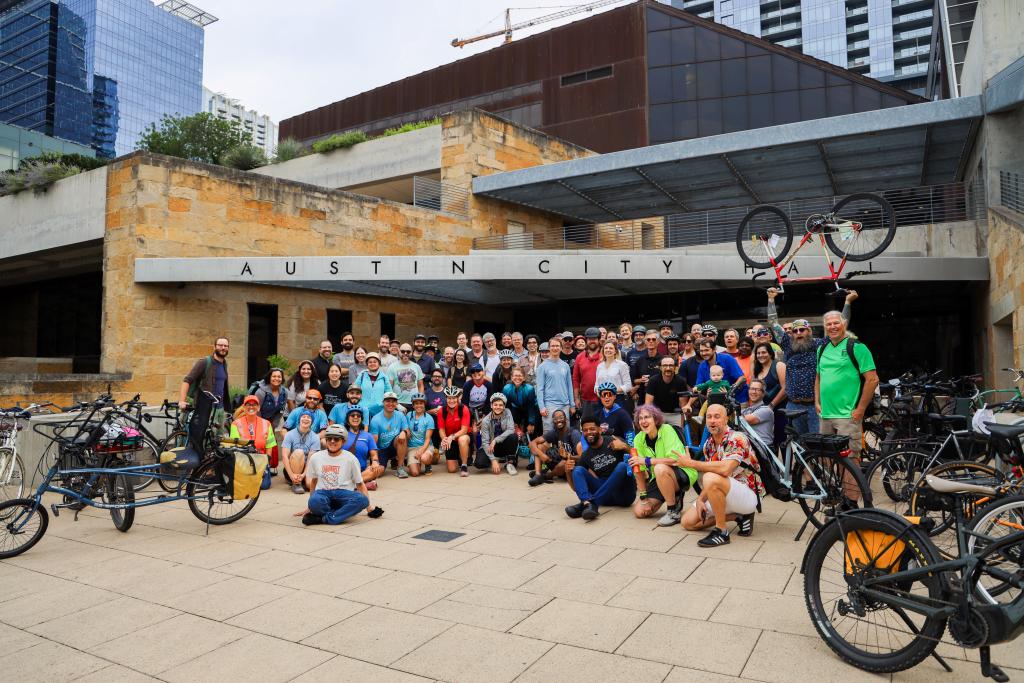
Bike to Work Day is coming up Friday, May 16. Fueling stations will be available along your commute, offering treats like coffee, tacos and snacks; CapMetro Bikeshare will offer free passes; group rides will happen; a celebration will be held at City Hall; and afterparty will be hosted by Central Machine Works.
It’s a celebration we endorse and promote at Austin Transportation and Public Works (TPW), because more people bicycling to work means less traffic congestion and air pollution.
Have you considered bicycling to work?
No, we’re not trying to guilt you into it. For many people, biking to work just isn’t realistic — maybe it’s just too far, a hectic personal life won’t permit it, or a physical challenge makes it impossible. We understand.
However, if you have been thinking about trying out a bike for your commute … give it a go! There are many benefits — the exercise can improve your mental and physical health and it’s cheaper than the gasoline, car maintenance and highway tolls.
It will require some preparation, including some things that might not occur to you if you’re more accustomed to driving.
First, of course, you’ll need a bike and helmet. If you don’t already own those, Austin has plenty of bike shops to help find what’s right for you. Also, buy equipment that will allow you to carry what you need, such as saddlebags, a backpack or baskets (some bikes have them built-in).
You may want to consider buying an electric bike (e-bike) — they have a motor that adds power to your pedaling, which can help you go up hills or travel faster or farther. And don’t forget, Austin Energy offers rebates of up to $600 on qualifying e-bike purchases.
Then, plan your trip — if you previously commuted on a highway or major arterial, now you’ll be looking for streets with bike lanes or taking trails. TPW has tools to help you plan your safest and easiest route. The Austin Bike Map is available both online and in print (reach out to austinmobility@austintexas.gov for a copy), featuring color-coding that shows which routes are most comfortable. You can also use the trip planner at GetThereATX.com.
Dress appropriately — make sure you’re comfortable (warm in winter, light and cool in summer, and shoes appropriate for pedaling) and visible. In summer, you might need to shower at the office (if your company offers it) and change into work clothes.
Finally, be safe. Obey traffic laws. Use bike lanes or a trail wherever possible. Be sure to always ride in the same direction as traffic and don’t forget to use your hand signals when turning. And practice defensive driving — make eye contact with motorists and be certain they’re going to stop before heading into an intersection.
Consider these factors when weighing whether bicycling to work is right for you:
-
Ease into it. Decide what’s right for you. Maybe every day is too much? Then pick a day that’s your biking day. If the weather is bad, don’t feel pressured to ride — just resolve to try it again on the next nice day so that you don’t fall out of the habit.
-

 Austin, TX4 days ago
Austin, TX4 days agoBest Austin Salads – 15 Food Places For Good Greens!
-

 Education1 week ago
Education1 week agoIn Alabama Commencement Speech, Trump Mixes In the Political
-

 Technology1 week ago
Technology1 week agoBe careful what you read about an Elden Ring movie
-

 Culture1 week ago
Culture1 week agoPulitzer Prizes 2025: A Guide to the Winning Books and Finalists
-

 World6 days ago
World6 days agoThe Take: Can India and Pakistan avoid a fourth war over Kashmir?
-

 Education1 week ago
Education1 week agoUniversity of Michigan President, Santa Ono, Set to Lead University of Florida
-

 Technology6 days ago
Technology6 days agoNetflix is removing Black Mirror: Bandersnatch
-

 News6 days ago
News6 days agoReincarnated by A.I., Arizona Man Forgives His Killer at Sentencing
